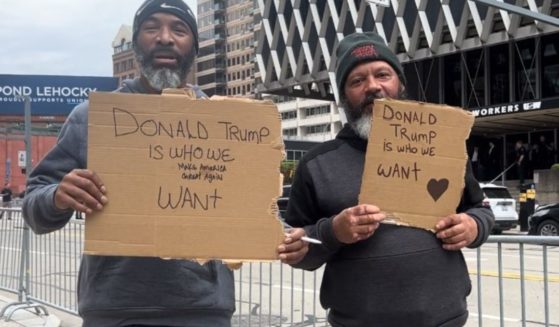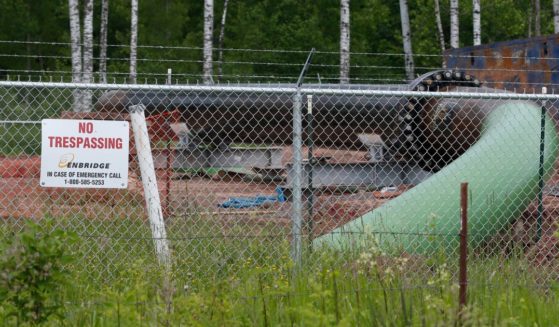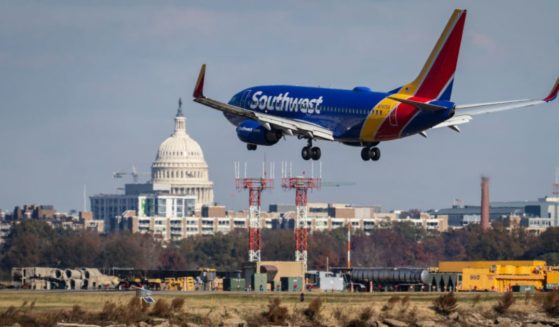These Are The 11 Cities Most Likely to Run Out Of Water as 'Day Zero' Looms Near
In what is being deemed “Day Zero,” the plight of South Africa’s drought has hit full-force as it’s second-largest city, Cape Town, prepares for the worst water shortage it has seen in nearly a century.
The city’s water supply is expected to run dry by April 21, leaving in its wake a host of consequences for its 4 million inhabitants.
However, compiling a list of other countries that may soon suffer the same fate, the BBC suggests Cape Town is merely the “tip of the iceberg” when it comes to dwindling water supply and extreme drought.
This is the current list:
1. São Paulo — One of the world’s most-populated cities and the financial capital of Brazil, São Paulo went through its own water crisis back in 2015 when its main reservoir fell below 4 percent. “Lack of proper planning and investments” was the allegation from the UN as the city slowly recovered.
However, by January 2017, the reservoirs were at a measly 15 percent, leaving many to question the future of the city’s water supply.
2. Bangalore — The rapid growth of India’s popular city has lawmakers struggling to manage the city’s sewage and water systems, with recent reports claiming the city loses nearly half of its drinking water to waste. A recent study had experts reeling as they found an estimated 85 percent of water from the city’s lakes could only be used for irrigation and industrial cooling — and found no lake suitable for drinking or even bathing.
3. Beijing — Though home to nearly 20 percent of the world’s population, China has only 7 percent of the world’s freshwater — and 40 percent of the surface water in Bejing is so polluted it has been deemed as not being suitable for agriculture or even industrial use. Authorities attempted to counteract the problem by creating water diversion projects, educational programmes and price hikes for the precious resource.
4. Cairo — Though it is said the River Nile was a crucial establishment to one of the world’s greatest civilizations, the renowned resource is struggling in the modern age. Experts estimate that the source, which makes up 97% of Egypt’s water supply, has become the host of increasing amounts of untreated agricultural and residential waste.
According to the World Health Organization, Egypt is high among the list of deaths related to water pollution, with the UN estimating a crucial shortage by 2025.
5. Jakarta — The Indonesian capital, according to the BBC, is one of many coastal cities that face the threat of rising sea levels that has only been made worse by the illegal diffing of wells — effectively draining the underground aquifers at a rapid pace. Now, nearly 40 percent of Jakarta remains below sea level as aquifers fail to replenish.
6. Moscow — Even though Russia is home to one-quarter of the world’s freshwater reserves, the country is still hounded by pollution problems stemming from the Soviet era. Especially alarming is the city’s 70 percent dependence on surface water, with officials admitting that nearly 60% of the total drinking water throughout Russia is a far cry from meeting sanitary standards.
7. Istanbul — Based on figures from the Turkish government that state the per capita water supply recently fell below 1,700 meters, experts claim Istanbul may be seeing its own water crisis by 2030 if no amends are made — and made quickly. Heavily populated areas, such as the booming city of 14 million inhabitants, have seen a drop in reservoir levels since 2014.
8. Mexico City — Though the Mexican capital is no stranger to water shortages, experts suggest the problem may be getting worse as one in five struggle to get adequate water from their taps and merely 20 percent are able to have running water for even a small portion of the day.
The city admits to not having any large-scale operation for recycling its wastewater, and imports nearly 40& of it from sources in distant areas, and loses much of its water due to problems with the pipe networking.
9. London — Though possibly surprising, London has its own challenges in the crisis of sustainable water. Having less annual rainfall compared to cities such as New York and Paris, the famous city draws nearly 80% of its source from rivers Thames and Lea.
The Greater London Authority recently claimed that the city is pushing the limits on its capacity, which will likely cause added stress by 2025 and “serious shortages” by 2040. Having less annual rainfall compared to cities such as
10. Tokyo — Though it receives annual rainfall comparable to that of Seattle, Tokyo must concentrate its water supply during four months of the year when precipitation is highest, with over 700 buildings throughout the city utilizing rainwater collection systems.
However, drier-than-expected seasons can lead to drought for more than 30 million inhabitants, whose systems also rely 70 percent on surface water. Investments in pipeline infrastructures have been made, but are estimated to only reduce leakage and unnecessary waste by 3% in the future.
11. Miami — The final city on this list is the ever-sunny — if not unpredictable — Miami, Florida. Although it is among the top five states to receive heavy rainfall annually, the city may soon be facing a crisis that has slowly been brewing for years.
What had been an early 20th Century project to drain nearby swamps has turned into a modern-day disaster as water from the Atlantic Ocean increasingly contaminates the Biscayne Aquifer, the city’s main fresh water source.
As the city experiences faster rates in sea level rise, the 1930’s project still allows water to breach underground defense barriers that had been installed in recent decades, causing neighboring cities — such as Hallandale Beach, which closed six of its eight wells due to saltwater intrusion — to struggle.
And though none are yet as bad as Cape Town, experts continue to point to the struggling city as a picture of what could be.
The South African citizens will have to line up in the streets as they choose one out of the 200 water stations scatter throughout the city, with lawmakers imposing police and army units to monitor crowds and enforce the mandated 6.6 gallons per person.
“The average ordinary citizen is reaching the breaking point,” said water expert Anthony Turton, who works at the Center for Environmental Management at the University of Free State. “You have people saying, ‘Enough,’ and ‘No further.'”
Truth and Accuracy
We are committed to truth and accuracy in all of our journalism. Read our editorial standards.












